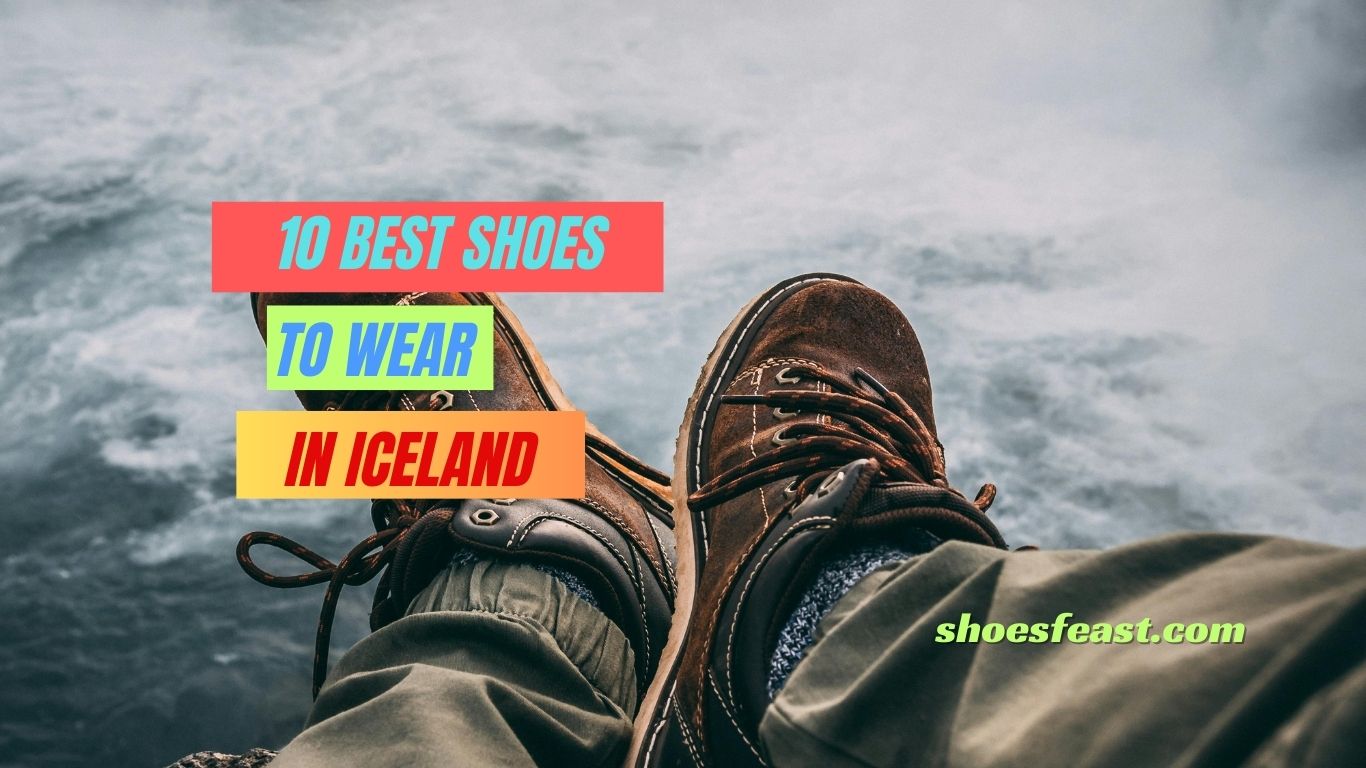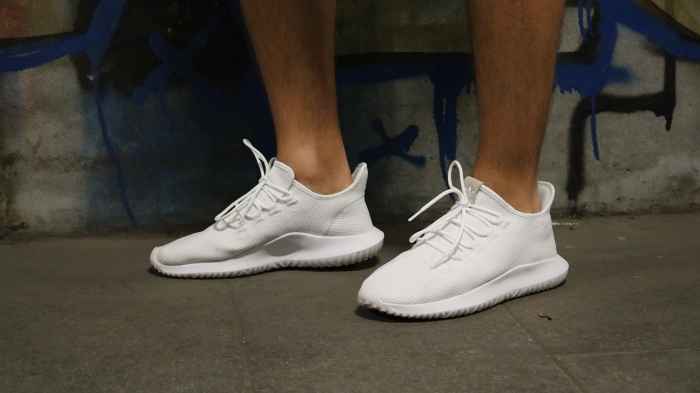10 Best Shoes to Wear in Iceland
When planning a trip to Iceland, selecting the right footwear is as crucial as packing your passport. The unique Icelandic terrain, with its volatile weather conditions and varied landscapes from volcanic fields to icy glaciers demands specific attention to what you wear on your feet. Choosing the proper shoes not only enhances your safety but also your overall experience, allowing you to explore Iceland’s natural beauty comfortably and efficiently.
Whether you’re hiking up a glacier, walking through a national park, or exploring urban areas, the right shoes will ensure that your adventures are enjoyable rather than endurance tests. This guide aims to help you make an informed choice, focusing on the essential qualities of the best shoes for your Icelandic adventure.
Top 10 Shoe Reviews for Traveling in Iceland
When venturing into Iceland’s enchanting but challenging terrain, having the right footwear can make all the difference. Below, we review the top 5 shoes that are best suited for Iceland’s diverse landscapes, each carefully evaluated to ensure they meet the demands of durability, comfort, and weather resistance.
1. Salomon X Ultra 3 GTX
The Salomon X Ultra 3 GTX is designed for the adventurer who needs a reliable shoe that can handle diverse terrains. Engineered with Descent Control Technology, this shoe excels on steep and slippery trails, making it ideal for Iceland’s varied topography. The Advanced Chassis, surrounded by foam cushioning, ensures comfort while stabilizing your feet and reducing fatigue on long treks.
The Gore-Tex membrane is a standout feature, offering exceptional waterproofing without sacrificing breathability, crucial for Iceland’s unpredictable weather. Additionally, the Contragrip sole provides unmatched grip on both wet and dry surfaces, enhancing safety in icy conditions.
Pros:
-
Excellent traction with Contragrip technology
-
Waterproof and breathable Gore-Tex liner
-
Lightweight and comfortable with foam cushioning
-
Descent Control Technology aids in downhill stability
-
Quicklace system for easy adjustments
Cons:
-
Can be pricey compared to other hiking shoes
-
May run slightly narrow, which could be an issue for wider feet
-
Break-in period required for optimal comfort
Table of Contents
Toggle2. Merrell Moab 2 Mid Waterproof
Merrell’s Moab 2 Mid Waterproof is a solid choice for the rugged landscapes of Iceland. This mid-cut boot offers ample ankle support, essential for traversing uneven and rocky paths. The suede leather and mesh upper provide durability and breathability, while the M Select DRY barrier ensures water stays out.
The Vibram TC5+ sole delivers reliable traction across various surfaces, from wet grass to loose gravel. Comfort is enhanced by the Merrell air cushion in the heel, absorbing shocks and adding stability. Moreover, the boot features a protective rubber toe cap which is a boon when tackling the rough Icelandic terrain.
Pros:
-
Durable suede and mesh upper
-
Excellent ankle support with mid-cut design
-
Vibram TC5+ sole for superior traction
-
Waterproof with M Select DRY technology
-
Comfortable air cushion in the heel
Cons:
-
May feel heavier than other hiking boots
-
Some users report a longer break-in period
-
Not as warm as other specialized winter boots
3. Columbia Newton Ridge Plus Waterproof Amped
The Columbia Newton Ridge Plus Waterproof Amped boot combines functionality with style, suitable for both trail walks and casual outings in Iceland. Built with a waterproof leather and suede upper, it keeps your feet dry during rainy hikes or snowy walks. The lightweight Techlite midsole offers long-lasting comfort, superior cushioning, and high energy return, which is crucial for days filled with extensive walking.
Omni-Grip traction rubber soles ensure a secure grip on diverse landscapes, from icy pavements to muddy trails. The boot’s durable construction and seam-sealed membrane enhance its longevity and resistance to wear.
Pros:
-
Stylish yet functional design
-
Waterproof leather and suede upper
-
Lightweight and comfortable Techlite midsole
-
Excellent traction with Omni-Grip outsole
-
Durable and well-constructed
Cons:
-
Limited insulation for extreme cold
-
May require some time to break in
-
Runs small, suggesting a need for sizing up
4. Keen Targhee II Waterproof Hiking Shoe
Keen’s Targhee II Waterproof Hiking Shoe is renowned for its durability and comfort. This shoe features a waterproof nubuck leather upper and a KEEN.DRY waterproof, breathable membrane that effectively blocks out water while allowing vapor out. The multidirectional lug pattern on the outsole provides excellent traction, which is perfect for Iceland’s slippery surfaces.
The ESS shank offers lightweight support, while the metatomical footbed design delivers excellent arch support and cradles the natural contours of the foot. It’s an ideal shoe for those who prefer the mobility of a low-cut shoe but need the ruggedness of a boot.
Pros:
-
Waterproof and breathable with KEEN.DRY
-
Excellent traction with multidirectional lug pattern
-
Supports and conforms to your feet with metatomical footbed
-
Robust nubuck leather upper
-
Offers a comfortable, snug fit
Cons:
-
The low-cut design may not provide enough ankle support for all users
-
Sizes tend to run half a size small
-
Not the lightest option available
5. La Sportiva Trango TRK GTX
La Sportiva’s Trango TRK GTX excels in high-altitude and rugged terrains, making it perfect for Iceland’s more demanding hikes. This boot is crafted with a durable polyester mesh upper, which is paired with a Gore-Tex Performance Comfort lining to ensure your feet stay dry and comfortable.
The Vibram Mulaz outsole with a technical edging platform and aggressive rear lugs offers excellent grip on steep and rocky surfaces. The 3D Flex system allows for better control on uneven ground. This boot not only provides exceptional support and protection but also has a modern aesthetic that sets it apart from traditional hiking boots.
Pros:
-
Superior durability and waterproofing with Gore-Tex
-
Exceptional traction with Vibram Mulaz outsole
-
Aesthetic design coupled with rugged functionality
-
Comfortable despite its robust build
-
3D Flex system enhances control on uneven terrains
Cons:
-
More expensive than many other options
-
May be overkill for less challenging trails
-
Somewhat stiffer, requiring a break-in period
6. Scarpa Zodiac Plus GTX
The Scarpa Zodiac Plus GTX is a hybrid between a heavy-duty mountaineering boot and a nimble hiking shoe. It features a sock-fit DV construction that reduces bulk and enhances fit, with a Gore-Tex membrane for superior waterproofing and breathability. The Perwanger suede leather upper offers rugged durability.
Its Vibram Drumlin outsole provides exceptional grip on mixed terrain, making it an excellent choice for Iceland’s diverse landscapes. Furthermore, the boot’s midsole has a Pro-Fiber 20 insole, which delivers all-day comfort and support, crucial for long days of exploration.
Pros:
-
Exceptional durability with Perwanger suede leather
-
Waterproof and breathable Gore-Tex membrane
-
Superior grip with Vibram Drumlin outsole
-
Lightweight and comfortable for long hikes
-
Advanced fit with sock-fit DV construction
Cons:
-
High price point
-
The robust build may feel overbuilt for light trails
-
Takes time to break in properly
7. The North Face Hedgehog Fastpack GTX
The North Face Hedgehog Fastpack GTX is designed for hikers who value speed and efficiency. This shoe combines a GORE-TEX waterproof membrane with a CRADLE GUIDE midsole and Snake Plate technology to offer support and rigidity without compromising flexibility.
The Vibram rubber outsole ensures reliable traction on both wet and dry surfaces. Lightweight and built for performance, this shoe is ideal for those who want to move quickly and with confidence through Iceland’s variable conditions.
Pros:
-
Lightweight design ideal for fast hiking
-
Waterproof with GORE-TEX membrane
-
Excellent traction with Vibram outsole
-
Offers good foot support and flexibility
-
Breathable, keeping feet dry and comfortable
Cons:
-
Less ankle support due to low-cut design
-
Not as durable as heavier boots
-
Some users find the cushioning inadequate on very rough terrains
8. Asolo Falcon GV
The Asolo Falcon GV offers an outstanding balance between comfort and performance. Constructed with a water-resistant suede and high-tenacity nylon upper, and lined with a Gore-Tex waterproof membrane, it excels in keeping the feet dry and comfortable.
The EVA midsole provides lightweight cushioning, while the Asolo/Vibram Megagrip outsole delivers excellent traction and stability, critical for navigating Iceland’s slippery trails. This boot’s modern design and color options also make it visually appealing.
Pros:
-
Robust construction with water-resistant materials
-
Gore-Tex lining for optimal waterproofing
-
Excellent traction with Vibram Megagrip outsole
-
Aesthetic appeal with contemporary design
-
Comfortable EVA midsole cushioning
Cons:
-
Price may be prohibitive for some budgets
-
Limited insulation for colder conditions
-
Fits narrow, which might not suit all foot types
9. Adidas Terrex Swift R2 GTX
Adidas Terrex Swift R2 GTX is built for those who demand agility and protection in their outdoor footwear. This shoe features a Ripstop mesh upper for breathability and durability, while a Gore-Tex lining ensures waterproof performance.
The Traxion outsole offers optimal grip in all directions, crucial for Iceland’s slippery surfaces. Its speed lacing construction allows for quick lacing and a snug fit, enhancing overall foot stability.
Pros:
-
Lightweight and agile design
-
Waterproof and breathable with Gore-Tex
-
Superior grip with Traxion outsole
-
Speed lacing for quick, secure fitting
-
Durable Ripstop mesh upper
Cons:
-
May not provide enough support for heavy loads or very rugged terrain
-
Some users report discomfort in the toe area
-
Limited color options compared to competitors
10. Hoka One One Sky Kaha GTX
The Hoka One One Sky Kaha GTX stands out with its exceptional cushioning and support, making it ideal for the challenging terrains of Iceland. This boot features a full-grain leather upper and a Gore-Tex waterproof membrane for resilience and protection.
Its Vibram Megagrip hi-traction outsole with multidirectional lugs ensures solid footing on slippery ground. The boot’s Rangi bottom midsole offers durable cushioning, reducing foot fatigue on long excursions.
Pros:
-
Exceptional cushioning for maximum comfort
-
Durable full-grain leather upper
-
Waterproof and breathable with Gore-Tex
-
Excellent traction with Vibram outsole
-
Stylish design suitable for both trails and casual wear
Cons:
-
Higher price range
-
Some may find the boots too bulky
-
Heavier than typical hiking shoes
Buyer’s Guide
1. Durability: Iceland’s rugged landscape requires shoes that can withstand harsh conditions. Look for footwear constructed with high-quality materials designed to endure cold, wet, and abrasive environments. Shoes made from genuine leather or advanced synthetic materials offer longevity and resistance against wear and tear. Pay attention to reinforced seams and waterproof treatments that enhance durability.
2. Grip: The terrain in Iceland varies dramatically, from slippery ice patches to loose volcanic ash. A reliable grip is essential to navigate these surfaces safely. Opt for shoes with deep, multi-directional lugs on the sole, providing traction on both wet and dry surfaces. Rubber soles designed for ice and snow, such as those with Vibram Arctic Grip technology, are particularly effective in preventing slips and falls.
3. Comfort: Comfort is paramount, as exploring Iceland typically involves long walking periods. Ensure the shoes you select have a supportive fit, cushioning, and perhaps most importantly, proper insulation. Shoes with ergonomic footbeds and midsoles, like EVA (ethylene-vinyl acetate), can significantly enhance comfort and reduce foot fatigue. Additionally, consider options with ankle support to prevent injuries in uneven terrains.
4. Waterproofing: Iceland’s weather can be unpredictable, with sudden rain showers and snowfalls. Waterproof shoes are indispensable. Look for features such as Gore-Tex liners, which not only keep your feet dry but are also breathable to manage moisture from within. This dual functionality is crucial for maintaining comfort during longer treks or sudden weather changes.
5. Versatility: Given the variety of activities possible in Iceland, from hiking glaciers to exploring urban settings, versatile footwear is beneficial. Shoes that offer a balance between robust outdoor features and stylish design are ideal. Such versatility ensures that you can transition from outdoor adventures to casual dining without needing multiple shoe options.
FAQ
Q1: What type of shoes are best for summer hiking in Iceland?
For summer hiking, opt for lightweight, breathable hiking boots or trail shoes with good grip and waterproof features. These ensure comfort and dryness during longer trails and unexpected river crossings.
Q2: Are regular sneakers suitable for visiting Iceland?
Regular sneakers are fine for urban areas or light walking. However, for any outdoor activities or excursions into natural reserves, sturdier, waterproof footwear is recommended to handle the terrain and weather conditions.
Q3: How important is it to have waterproof shoes in Iceland?
Extremely important. Iceland’s frequent rainfall and wet terrain make waterproof shoes a necessity, not just a convenience. They keep your feet dry, prevent blisters, and maintain overall foot health.
Q4: Can I wear the same shoes in winter as I do in summer in Iceland?
It’s advisable to have different shoes for winter and summer due to Iceland’s seasonal extremes. Winter shoes should have enhanced insulation and more aggressive grip for ice and snow, while summer shoes can be lighter and more breathable.
Q5: What should I look for in a sole when buying shoes for Iceland?
Look for soles with deep lugs and rubber compounds that provide traction on both ice and rocky surfaces. Soles like Vibram are widely recognized for their superior grip and durability in diverse conditions.
Q6: Is it better to buy shoes before arriving in Iceland or after?
It’s better to buy them before arriving to ensure they are well broken in, which reduces the risk of blisters and discomfort during your trip.
Q7: Are there any specific brands that are recommended for Icelandic conditions?
Brands like Salomon, Merrell, and Columbia are renowned for their durable and weather-resistant hiking footwear that’s well-suited for Icelandic conditions. Always choose a model that fits your specific activity needs and personal comfort preferences.
Conclusion
Selecting the right footwear for your Icelandic adventure is essential, not just for comfort but for safety and functionality. The shoes reviewed offer various features to handle Iceland’s demanding conditions, from waterproofing to exceptional grip and durable construction. Ensuring you have the right shoe will enhance your experience, allowing you to explore with confidence and stability.







